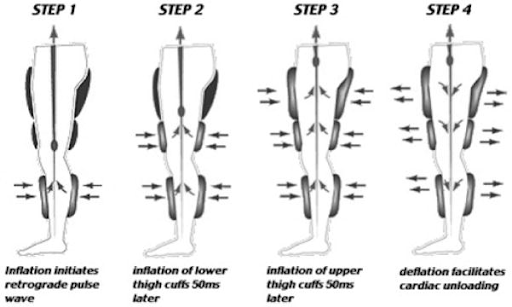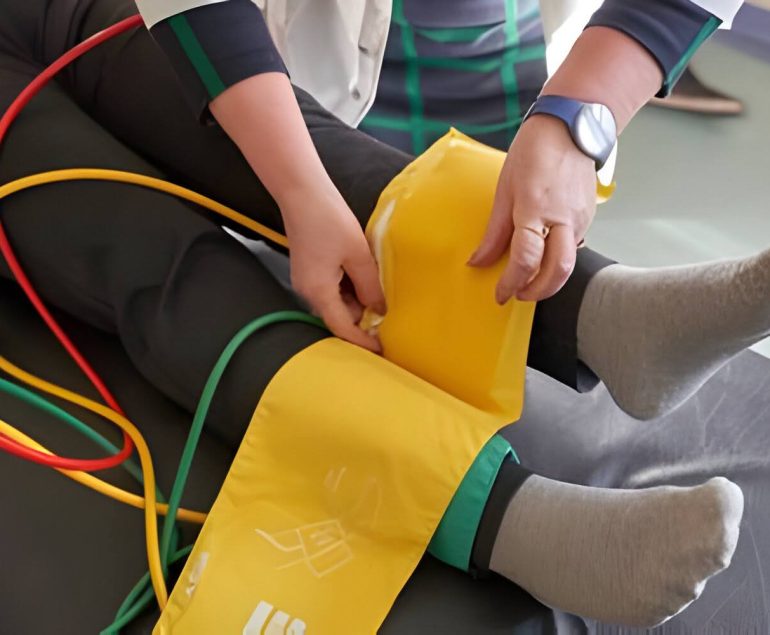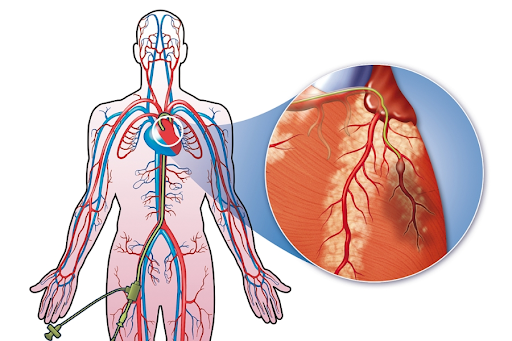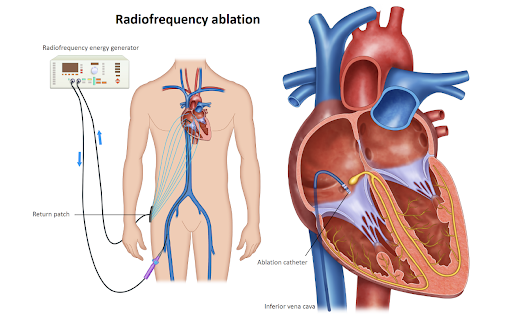Enhanced External Counterpulsation (EECP) therapy is a non-invasive medical treatment used to improve symptoms and quality of life in patients with certain cardiovascular conditions, particularly chronic stable angina and heart failure. EECP involves the use of inflatable cuffs or sleeves wrapped around the patient’s legs, which are sequentially inflated and deflated in coordination with the cardiac cycle to enhance blood flow to the heart and improve coronary artery perfusion.
Procedure
During an EECP therapy session, the patient lies on a treatment table or bed while wearing inflatable cuffs or sleeves around both legs. Electrocardiogram (ECG) electrodes are placed on the chest to monitor the patient’s heart rhythm throughout the procedure. The following steps outline the general process of EECP therapy:- Cuff Inflation and Deflation: The cuffs or sleeves are sequentially inflated and deflated in coordination with the cardiac cycle, typically using a computer-controlled pneumatic system. The cuffs inflate sequentially from the calves to the thighs during diastole (when the heart is at rest), compressing the veins in the legs and increasing venous return to the heart. The cuffs deflate rapidly just before systole (when the heart contracts), reducing the workload on the heart and enhancing coronary artery perfusion.
- Treatment Sessions: EECP therapy is typically administered in a series of outpatient treatment sessions, with each session lasting about one hour. A full course of EECP therapy usually consists of 35 to 40 treatment sessions, administered five days per week for several weeks.
- Monitoring and Safety: Throughout the EECP therapy session, the patient’s vital signs, including heart rate, blood pressure, and oxygen saturation, are monitored closely to ensure safety and effectiveness. The treatment can be adjusted or discontinued if the patient experiences any discomfort or adverse effects.
Mechanism of Action
The beneficial effects of EECP therapy are thought to result from several mechanisms, including:- Enhanced Coronary Perfusion: EECP therapy increases coronary artery perfusion by enhancing diastolic pressure and coronary blood flow during diastole, when the heart is at rest.
- Reduction of Cardiac Workload: EECP reduces the workload on the heart by decreasing afterload (resistance against which the heart must pump blood) and preload (volume of blood returning to the heart), leading to improved cardiac efficiency and oxygen supply-demand balance.
- Vasodilation and Angiogenesis: EECP therapy may promote vasodilation (widening of blood vessels) and angiogenesis (formation of new blood vessels) in the coronary circulation, improving collateral circulation and oxygen delivery to ischemic myocardium.
Indications
EECP therapy is indicated for patients with certain cardiovascular conditions, particularly:- Chronic Stable Angina: EECP therapy is used to relieve symptoms of chronic stable angina, such as chest pain or discomfort, in patients who have not responded to conventional medical therapy or who are not candidates for revascularization procedures such as angioplasty or coronary artery bypass grafting (CABG).
- Heart Failure: EECP therapy may be used as an adjunctive treatment for patients with heart failure to improve symptoms, exercise tolerance, and quality of life.
Benefits
The benefits of EECP therapy may include:- Symptom Relief: EECP therapy can reduce the frequency, severity, and duration of angina episodes in patients with chronic stable angina, leading to improved quality of life and functional status.
- Improved Exercise Tolerance: EECP therapy may improve exercise tolerance and physical function in patients with heart failure or other cardiovascular conditions, allowing for increased activity levels and improved mobility.
- Safety and Non-Invasiveness: EECP therapy is non-invasive and generally safe, with minimal risk of complications or adverse effects compared to invasive procedures such as angioplasty or CABG.
Risks and Considerations
Although EECP therapy is generally safe, it may not be suitable for all patients, and it carries some risks and considerations, including:- Discomfort or Fatigue: Some patients may experience discomfort or fatigue during EECP therapy sessions, particularly during the inflation and deflation of the cuffs.
- Skin Irritation: Prolonged exposure to the cuffs may cause skin irritation or pressure sores in some patients.
- Contraindications: EECP therapy is contraindicated in certain patients, including those with severe peripheral arterial disease, active venous thromboembolism, aortic aneurysm, severe heart valve disease, or other conditions that may increase the risk of complications.




